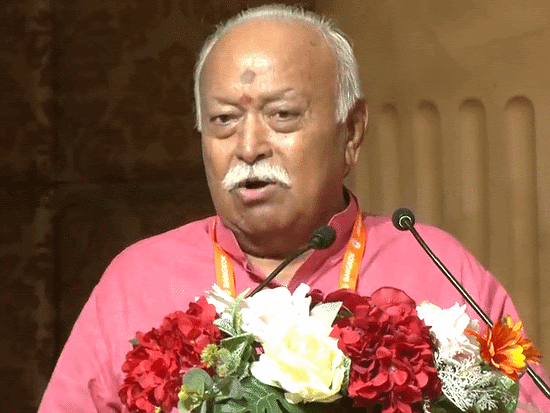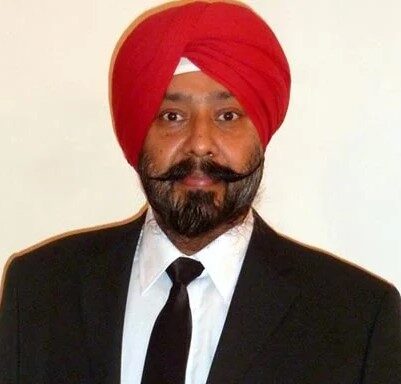 Founded on Vijayadashami 1925 in Nagpur by K.B. Hedgewar, the Rashtriya Swayamsevak Sangh (RSS) enters its centenary not as a relic but as the live wire of India’s Hindutva ecosystem. Organisationally dense, culturally confident, and politically proximate to a ruling party it helped nurture, the RSS marks a hundred years with both celebration and self-assertion.
Founded on Vijayadashami 1925 in Nagpur by K.B. Hedgewar, the Rashtriya Swayamsevak Sangh (RSS) enters its centenary not as a relic but as the live wire of India’s Hindutva ecosystem. Organisationally dense, culturally confident, and politically proximate to a ruling party it helped nurture, the RSS marks a hundred years with both celebration and self-assertion.
Two events frame the milestone: the Akhil Bharatiya Samanvay Baithak in Jodhpur (5–7 September 2025), and the centenary Vijayadashami Utsav in Nagpur on 2 October, where former President Ram Nath Kovind will preside as chief guest and Sarsanghchalak Mohan Bhagwat will deliver the keynote.
The Road to Nagpur Runs Through Jodhpur
Jodhpur is the conclave; Nagpur is the consecration. The first brings together representatives from 32 Sangh-inspired organisations—including the BJP—for closed-door coordination. The second, staged at daybreak in Reshimbagh, is the public spectacle designed to underline the RSS’s claim to be fountainhead rather than appendage.
By placing former President Kovind on the centenary stage, the Sangh signals inclusion while reminding both supporters and sceptics that it straddles cultural and constitutional respectability.
A Pithy Ledger of Bans—and Bounce-Backs
The RSS has been banned nationally three times: after Mahatma Gandhi’s assassination in 1948, during the Emergency of 1975–77, and again in December 1992 following the Babri Masjid demolition. Each time, it returned larger and more entrenched, demonstrating an organisational resilience that is as much a part of its legacy as its ideological fervour.
Core Ideology and Organisational Muscle
Formally a “cultural” body, the RSS advances Hindutva—civilisational nationalism centred on a Hindu cultural frame. Its strength lies in organisation more than rhetoric: the discipline of daily shakhas, a vast network of affiliates in student, labour, educational and service life, and a cadre ethos that prizes obedience and character.
The centenary themes—social harmony, family awakening, environmental awareness, selfhood, and civic duty—reflect its ambition to act as moral tutor to the nation, positioning itself as both guardian of tradition and guide for modern challenges.
RSS and BJP: The Uneasy Embrace
The RSS is not even a legal entity in the conventional sense. It is neither a registered society nor a statutory trust, but rather a vast, decentralised web of shakhas and an array of surrogate organisations carrying its ethos into different spheres of Indian life. The BJP is the most powerful of these affiliates, but it is no mere appendage, and the embrace between the two has always been both cooperative and competitive.
In 2024, BJP president J.P. Nadda declared that the party “runs itself,” a barbed assertion of autonomy from Nagpur. Yet in 2025, the pendulum swung back: PM Narendra Modi made his first-ever visit as prime minister to the RSS headquarters, and later lauded the Sangh as the “world’s biggest NGO” from the Red Fort. These were unmistakable signals of reconciliation, but also reminders of the peculiar nature of the RSS–BJP relationship: a political party owing much to a cultural fountainhead that itself operates outside the structures of law and state.
The RSS seeks ideological primacy; the BJP insists on electoral supremacy. Both need each other, but both resist being defined by the other.
Seventy-Five and Succession
A unique symmetry marks this centenary: both PM Modi (17 September 1950) and Mohan Bhagwat (11 September 1950) turn 75 within days of each other. Bhagwat has mused that leaders should step aside at that age. The BJP maintains no formal rule, though elders have often been retired at that threshold.
Whether either man contemplates withdrawal is speculative. What is certain is that succession optics will dominate. The imminent choice of the next BJP president—Nadda’s tenure long overstayed—will be read as a test of how much Nagpur influences Delhi. Jodhpur may not announce the successor, but it will frame the ground rules.
Engaging India’s Minorities
For Sikhs, the RSS has long attempted a delicate balancing act. Through platforms like Rashtriya Sikh Sangat, it affirms Sikh distinctiveness while also nudging the idea of a broader Hindu fold. The result is periodic outreach punctuated by sharp pushback from Sikh institutions whenever assimilation is implied. The centenary will likely showcase welfare and service as bridges, while avoiding theological confrontation.
For Muslims and Christians, the Sangh operates on two tracks: dialogue and discipline. Mohan Bhagwat has met Muslim clerics and encouraged the Muslim Rashtriya Manch, even as affiliates such as the Vishva Hindu Parishad press for stricter conversion laws. Expect more visible dialogue forums, but also continuing friction over law, demography, and identity.
Crafting a Worldview
The RSS straddles Bharat-first pride and universalist rhetoric. Mohan Bhagwat has insisted there is no reason to be apologetic about “Hindu Rashtra,” yet he frequently invokes Vasudhaiva Kutumbakam—the world as one family—and has made environmental stewardship central to the centenary themes.

Karan Bir Singh Sidhu, IAS (Retd.), former Special Chief Secretary, Punjab, writes on the intersection of constitutional probity, due process, and democratic supremacy.
The likely trajectory is a Bharat-centred universalism: India framed as a civilisational pole but clothed in globalist vocabulary. Whether this synthesis holds in practice—particularly abroad—will determine the RSS’s international legitimacy.
Nagpur, 2 October: What to Watch
As the centenary stage rises in Nagpur, four developments will command attention:
PM Modi’s presence or possible speech: While unconfirmed, his attendance—or even a surprise address—would be momentous. A sitting Prime Minister speaking at the RSS’s signature event would symbolise renewed embrace between Delhi and Nagpur. His long history as an RSS pracharak in Gujarat during the 1970s and 80s, before being deputed to the BJP, adds a personal and ideological weight to any role he plays at Reshimbagh.
Mohan Bhagwat’s keynote, where the balance between centenary themes and Hindutva’s harder edges will be closely parsed.
Ram Nath Kovind’s presence, a signal of inclusion and constitutional respectability.
The BJP subtext, where succession choices, minority outreach, and centre–state power dynamics will quietly unfold.
At a hundred, the RSS wants to appear both rooted and expansive—a mothership of cultural nationalism that can speak the idiom of grassroots Hindu society and the rhetoric of global stewardship.
Resetting the Equation: Nagpur and Delhi
The centenary is not a birthday party but a reset ritual. Nagpur uses it to reaffirm ideological primacy and organisational breadth; Delhi uses it to carve out room for a hyper-presidential style of governance. The equation between PM Modi and Mohan Bhagwat, the succession within the BJP, and the RSS’s handling of minorities and worldview will script the Sangh’s next act. A century after Hedgewar founded it, the RSS remains what it has always sought to be: not merely an organisation, but the parent culture from which India’s ruling party and ideological debates continue to flow.
Beyond the Heartland: South and Sanatan
What will define the RSS’s second century is how it stretches beyond its traditional terrain. Engagement with the non-Hindi-speaking South remains a formidable challenge: in Tamil Nadu, Kerala, Andhra Pradesh, and Telangana, the Sangh must contend with linguistic pride, Dravidian identity, and Left traditions. Its centennial outreach seeks to bridge these divides through welfare, education, and youth initiatives, but the test is whether cultural nationalism can resonate outside the Hindi belt.
At the same time, the RSS is intent on shaping discourse on Sanatan Dharma, casting it not as sectarian orthodoxy but as civilisational ethic—eternal, inclusive, and rooted. Whether this framing is received as a canopy of shared values or dismissed as a political slogan will determine how widely it is embraced. The centennial thus opens with both confidence and contradiction—poised between its heartland comfort, its southern challenge, and the embrace of Sanatan as both philosophy and politics.